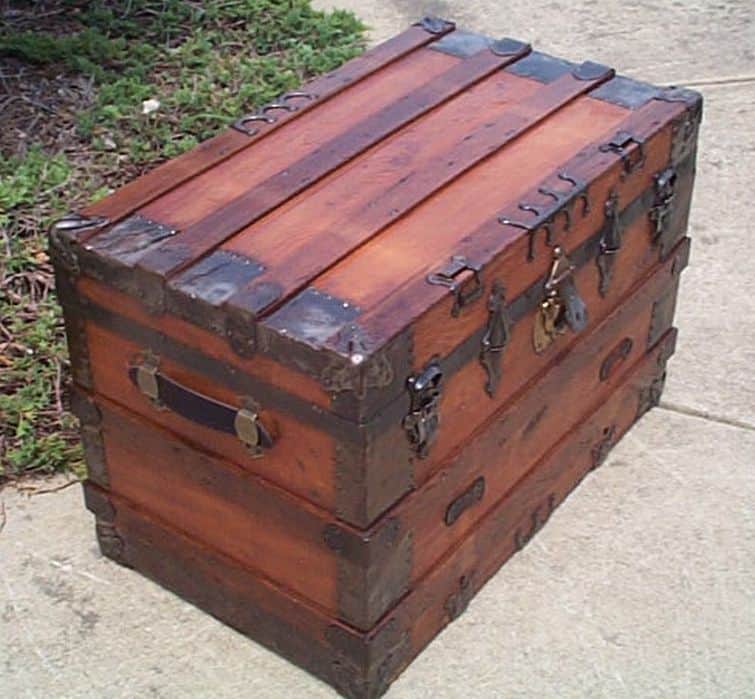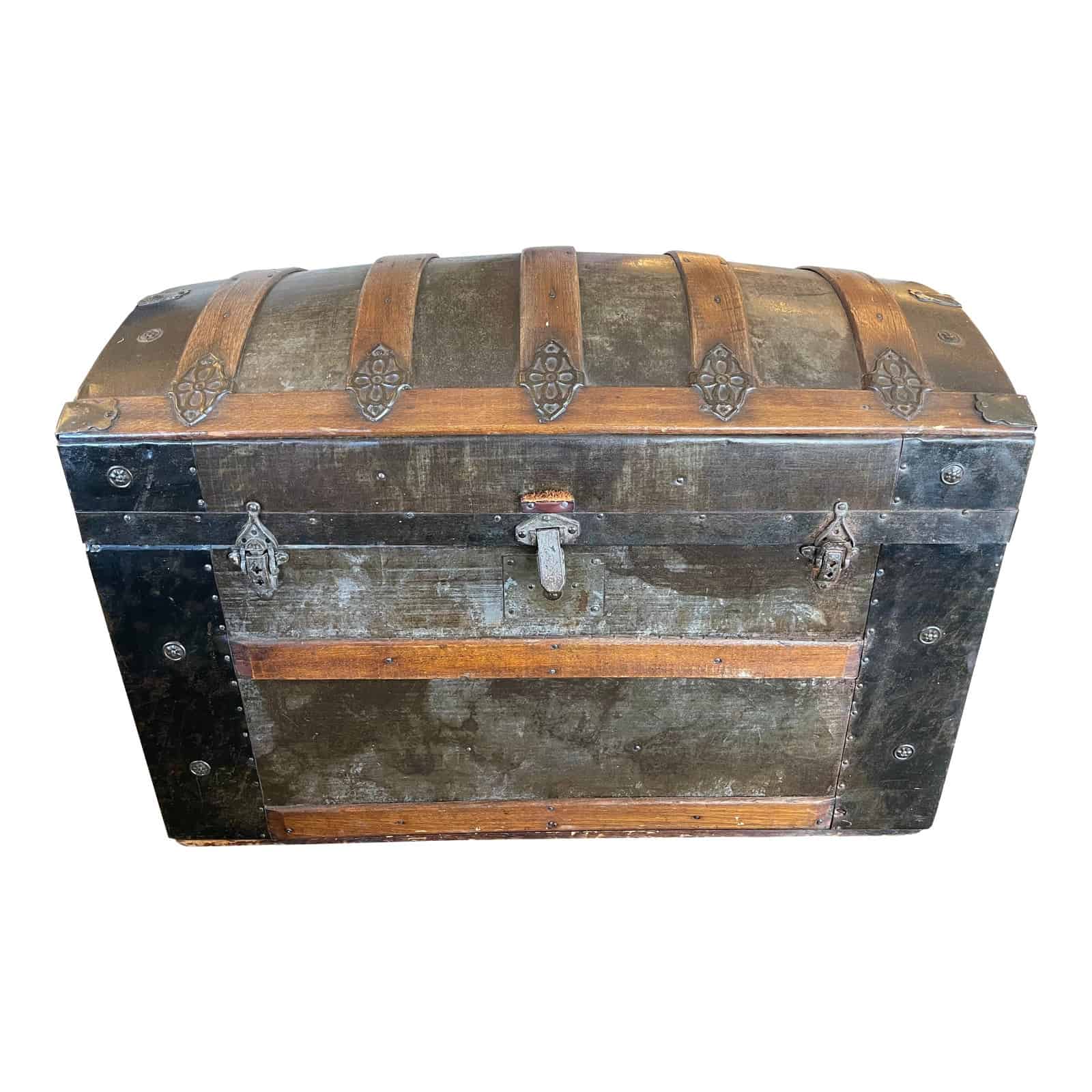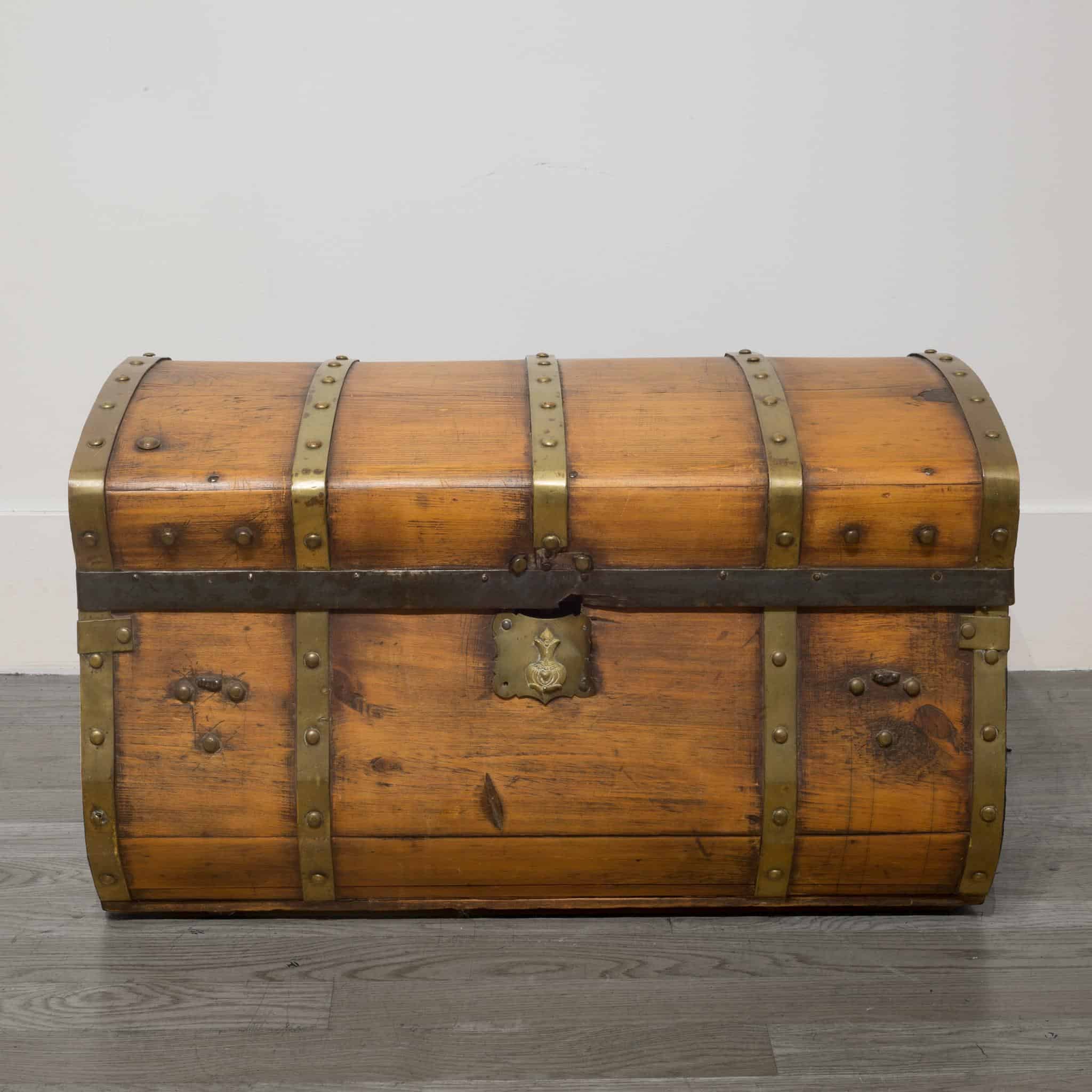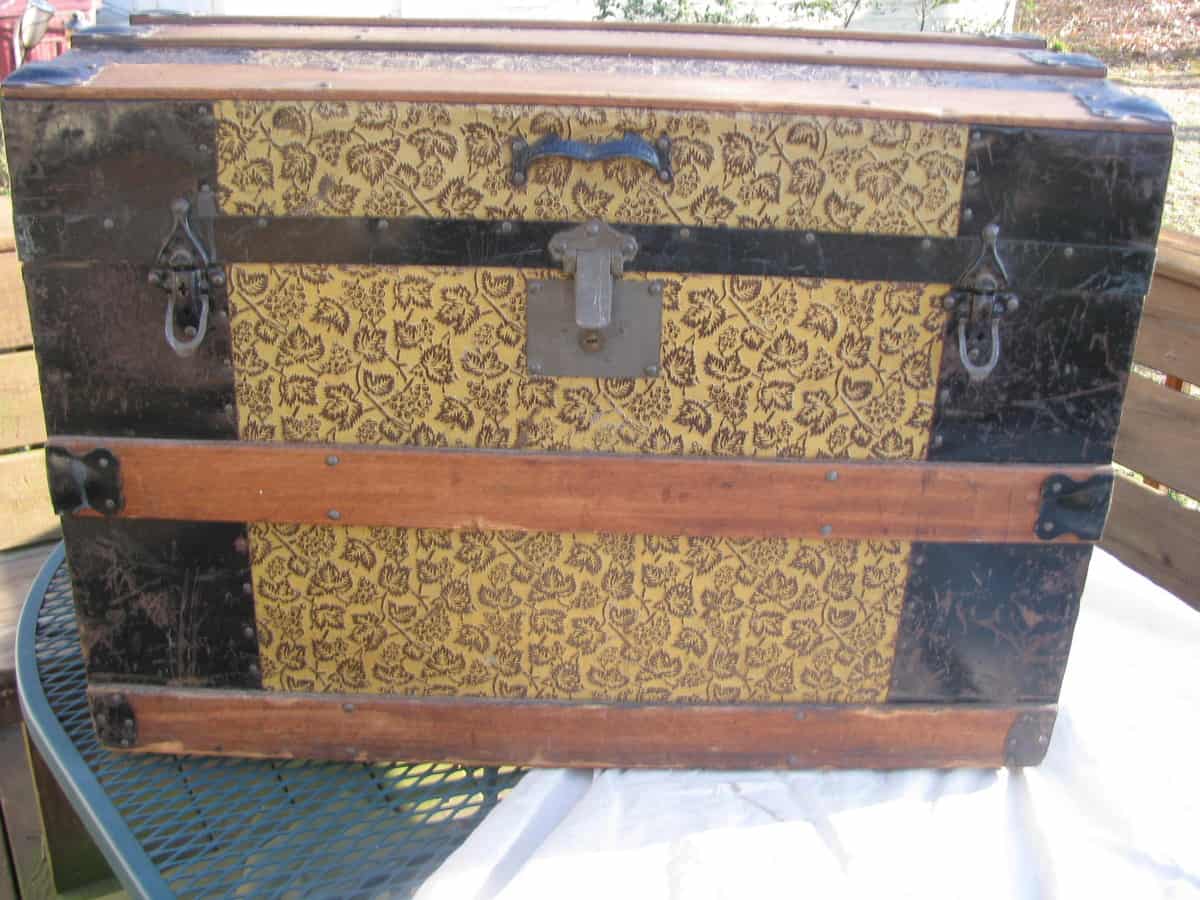Nobody can deny that an antique trunk is one of the most beautiful antique furniture that can be acquired or preserved. If you inherited it from your grandparents or purchased it at a garage sale or auction, you are really lucky.
In this post, we will not only teach you how to restore your old trunk step by step, but we will also provide you with helpful information on the different types of trunks and how to approach the process in the best way possible.
Because we need need to make several decisions about how we want to repair the trunks and what we want to do with them. That choice will have a big impact on the process your trunk will have to go through.
Some individuals prefer to entirely renovate the trunk and give it a more functional usage to suit the modern decor, while others prefer to maintain the trunk’s vintage look.
Whatever decision you make, we want to provide you with a comprehensive guide on furniture restoration. It may appear to be a difficult task, but it is simpler than you think. Let’s get this ball rolling.
Table of Contents
Understand the Implications of Restoring an Antique Trunk
Antique restoration is always a risk that must be carefully evaluated. However, in the case of trunks, the decision must be analyzed more closely.
If you plan to utilize the trunk for yourself or offer it as a present to a family member or friend, it is normally recommended that you perform a full or partial restoration.
But if what you want is to sell it as an antique, then we recommend that you be very careful with the restoration and intervene in the trunk as little as possible.
If fully repaired, chests can lose a significant amount of value. That is why it is crucial to gain a better understanding of your trunk and its value.
What type of trunk is it, and are collectors willing to pay a high price for it?
Wall or vanity chests for example are quite rare and very difficult to find in good condition, so if you have one of these, you better think twice before restoring it completely.
It might be a better investment to make a minimal restoration and leave it as original as possible because you’ll almost certainly find extremely excellent deals on this sort of trunk on the market.
How Can You Tell Whether Your Trunks are Vintage?
Trunks were fashionable in the nineteenth century. They were still in use at the turn of the century, but they were being phased out in favor of suitcases, which were smaller and easier to transport. This is how they gradually faded away from the market.
Examining the hardware is one of the simplest ways to determine whether or not your trunk is vintage. Metal elements such as locks, nails, and hinges can help you determine how old your trunk is.
Vintage brands are very well-known and desired by collectors. You have a gem in your hands if you have a Louis Vuitton trunk. Other brands that antique collectors may be interested in are Oshkosh, Rhino Trunk & Case, Haskell Brothers, Seward and Leatheroid, CA Taylor, and Malloy.
Finally, to assess its age, you must consider the several varieties of trunks available.
Flat-Top Trunks or Steamer Trunks

They are popular, with the majority being made of leather, metal, wood, or canvas. An old steamer trunk was ideal for travel because, unlike those with a rounded top, they could be easily stacked due to their rectangular shape.
Trunks With a Domed Top

Those with a domed top are the second most common. They are not as functional as the previous ones, but they are usually elaborately adorned.
This can be a challenge when it comes to restoration, as the vaulted chests had several compartments at the top, usually made of wood and cloth, and are mostly going to be in poor condition. So you have to be very careful with this type of trunk.
The Jenny Lind Trunks

Other rare trunks are the Jenny Lind trunks which are shaped like a loaf or an hourglass if viewed from the side. They were named after the Swedish singer of the same name.
The Wall Trunks

The wall trunks are the final item on the list. These pieces of furniture have specific hinges that allow the chest to be put flat against the wall when it is opened.
In good condition, these trunks are in high demand alongside vanity trunks, which have similar qualities but are distinguished by a lid that opens virtually the whole front half of the trunk, allowing it to rest on the bottom.
Step-by-Step Restoration of an Antique Trunk
We’ve arrived at the most exciting and informative section of the post, so pay attention because we’ll walk you through each step so you can restore your trunk on your own and feel proud of yourself.
1. Safety First
It’s critical to have a well-ventilated workroom or a garage where you can do all of the repairs. Do not bring an unrestored trunk into your home, as waterproofing paint on canvas trunks has been found to contain lead, which could create difficulties if inhaled when renovating.
You also have no idea where a trunk that could be over 100 years old has been or how it has been cared for. You have no idea how long it has been stored or what kind of mold it may contain.
It could also contain bacteria, mildew, dirt, and insects that can spread via your home’s furniture, or rat droppings.
They may have accumulated in the cracks and joints, even if they aren’t visible at first inspection.
Part of a good repair is not compromising your or your family’s health, which is why you should take all necessary precautions and work with items that protect you, such as gloves, glasses, or masks.
Make sure the interior and exterior of the trunk are clean and disinfected if you wish to restore it for personal use.
2. Equipment and Materials
You will need several supplies before you begin work:
- Sandpaper of different weights.
- belt buckles
- rivets
- 8 oz leather for molding straps and patches
- leather dye
- wood stain
In addition to materials, you will not be able to do anything if you do not have the necessary tools:
- Scraper or metal brush
- sharp chisel
- Drill
- wire wheel
- pliers
- macgyver razor
- sander
- surgical mask
- Goggles
- Saw (Only if you plan to make parts like the compartments or the top tray)
3. Deconstruct Your Trunk
This part of the process is where you should be most careful. The first step is to remove the cover as well as the leather hardware. Because your trunk is attached by nails and tacks with curved ends, you must be very careful.
They ensure the union of the woods in this way, and if they are not bent carefully from the inside of the trunk, you can cause a lot of damage and have to work twice as hard to restore the trunk properly.
Use the sharp chisel to assist yourself in performing this procedure with caution. After you’ve bent the ends, remove all of the old nails with the nail puller and disassemble your trunk properly.
Examine all of the elements you’ve removed to ensure they’re not rotting. After running them via the wire wheel, those in good condition can be extremely good.
If the rest of the hardware, such as the hinges or metal trim, is in good shape, you can leave them in place; if not, you can remove them and replace them with new ones.
4. The Metal Must be Cleaned
Keep the patina on the metal untouched and do not remove it if you want the trunk to have an antique aspect.
This is where the wire brush comes in handy. It can also be attached to the end of a drill for easier use. This is when the wire wheel comes in handy because it can get into all the cracks.
You only want to remove the outer layer of rust and oxide, not polish the metal, so the trick is not to push that hard.
5. Remove the Canvas Cover and the Paper Lining, then Sand the Surface
The coating that protects the wood is quite easy to remove; all you need is a moist cloth or a damp sponge. Masks and gloves must be worn at all times.
You should be aware that many types of glue contain harmful additives, and that products back then did not have the same regulations as they do now.
Use a knife to cut along the seams of the canvases to remove them. The scraper can then be used to bury any surplus fabric under the seams and cut any hanging strands.
Following that, you can begin sanding. We recommend that you begin sanding with a coarser weight and work your way down to gentler weights like 300 grit. The trunk should be smooth to the touch.
To eradicate any trace of mold, fungus, or bacteria, wash the inside of the trunk with bleach diluted in a large amount of water.
6. Including Leather Work
You must decide at this point in the project because if the leather components are in poor condition, we propose that you replace them entirely. Either leave them as is or replace them entirely, but don’t just replace some while leaving others alone; this will look ugly and will detract from your trunk.
If you want to replace the original straps, we recommend you purchase 7 or 8-ounce leather. If possible, choose a color that is similar to the original or complements the colors of your trunk.
At this point, you should check to determine if the original tacks can be saved or if they need to be replaced.
Make your replacement straps using the original strap fasteners as a template, and try to put the nails or tacks into the existing holes for a neat finish.
7. Latest Finishes
Check to see if the lock requires a new key or if you may use it without one. If you intend to utilize the lock, look for a genuine replacement online or at an antique fair.
Decide whether you want to keep the trunk as is, protect it with multiple coats of varnish, or paint it a different color for a more modern look.
Final Words
We guarantee that if you follow all of these instructions to the letter, you will have the finest experience possible when working on a manual project on your own.
It will not only be a fun hobby, but you will also be able to restore an iconic item, since trunks, no matter how old, never go out of style and are a highly prized piece of home décor.
Always remember to work safely and consider whether you want to complete the process so that you may use the trunk in your home or repair it for sale.
Remember that if a trunk is in good shape or has a nice history, it can be quite reasonably priced on the market.
